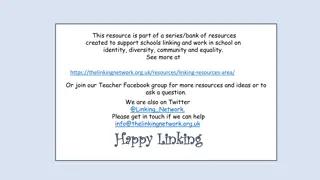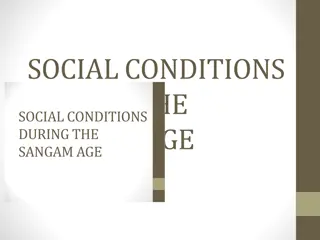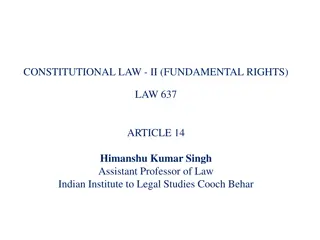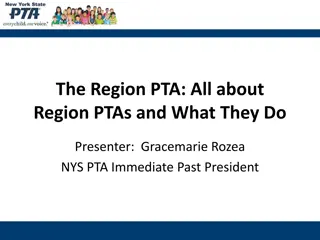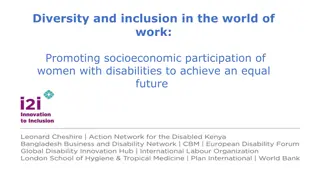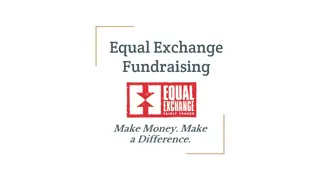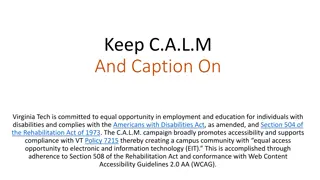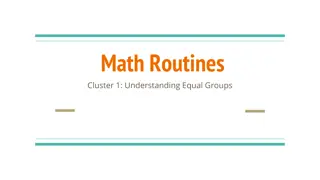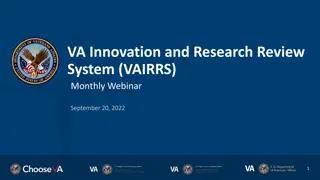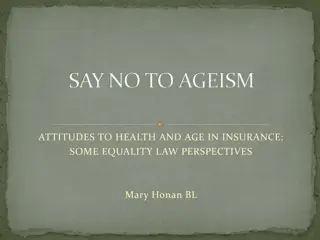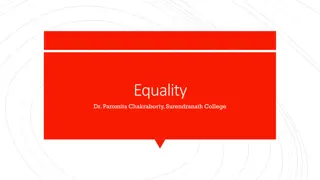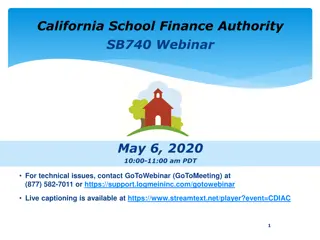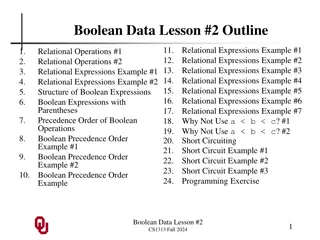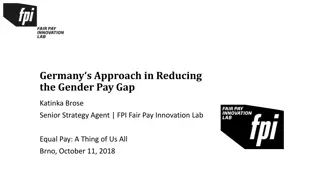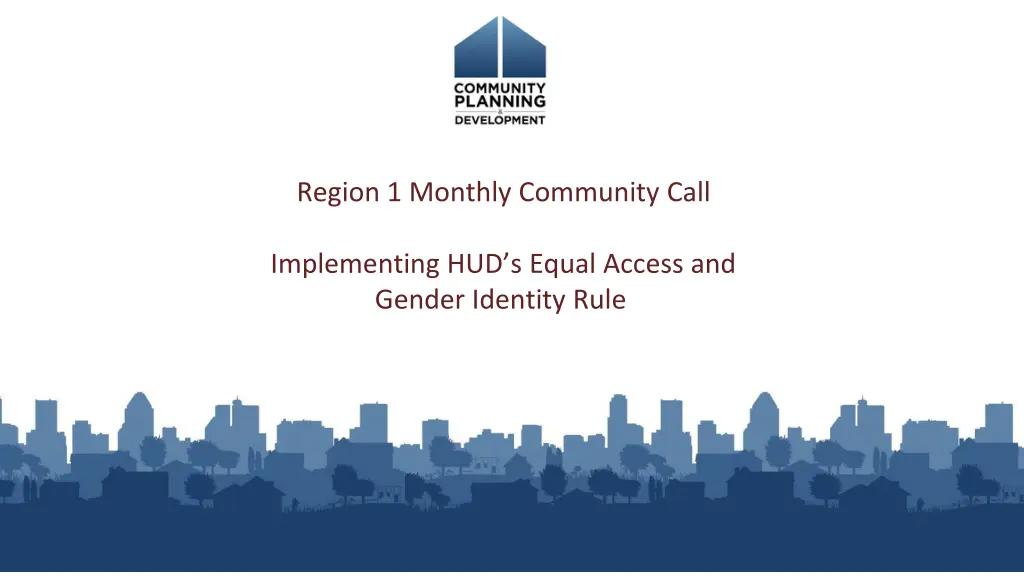
Implementing HUD's Equal Access and Gender Identity Rule
Learn about HUD's Equal Access and Gender Identity Rule effective since October 21, 2016, ensuring equal access for all individuals in HUD-assisted programs based on gender identity. Discover the guidelines for providers and the importance of reflecting these requirements in policies and procedures.
Download Presentation

Please find below an Image/Link to download the presentation.
The content on the website is provided AS IS for your information and personal use only. It may not be sold, licensed, or shared on other websites without obtaining consent from the author. If you encounter any issues during the download, it is possible that the publisher has removed the file from their server.
You are allowed to download the files provided on this website for personal or commercial use, subject to the condition that they are used lawfully. All files are the property of their respective owners.
The content on the website is provided AS IS for your information and personal use only. It may not be sold, licensed, or shared on other websites without obtaining consent from the author.
E N D
Presentation Transcript
Region 1 Monthly Community Call Implementing HUD s Equal Access and Gender Identity Rule 1
Your Regional Team Members Name Email Communities Ryan Burger, ICF ryan.burger@icf.com MA-502, MA-503, MA-504, MA-505, MA-509, MA- 516, MA-517, MA-518 (interim): ME-500, ME-502, VT-500, VT-501 Tom Albanese, Abt Associates Tom_Albanese@abtassoc.com CT-503, CT-505 Ashley Mann-McLellan, TAC amannmclellan@tacinc.org MA-500, MA-506, MA-510, MA-511, MA-515, MA- 519, RI-500 Jon Cox, Center for Social Innovation jcox@center4si.com MA-507, MA-508, NH-500, NH-501, NH-502 2
Webinar Logistics Slides will be available after the webinar To submit a question: Type your question in the Q&A box (select either all participants or all panelists ) To ask a question: Raise your hand and you will be unmuted (functionality only available for those who have called in via phone) Please submit any technical issues related to WebEx in the chat box 3
Agenda 1. Welcome and Introductions 2. Equal Access and Gender Identity Rule Review Equal Access and Gender Identity Rule Question and Answer 3. Tier 2 Unfunded Project Technical Assistance 4
HUDs Equal Access and Gender Identity Rule In effect October 21, 2016 Equal access is provided in all HUD assisted programs CoC, ESG, HOME, CDBG, HOPWA, Housing Trust Fund, Rural Housing Individuals are housed in accordance with gender identity No requirements for individuals to prove gender identity for service Providers must update policies and procedures to reflect requirements 5
Providing Equal Access Providers may not deny access to a single-sex emergency shelter or facility because a client s ID, appearance, or behavior indicates a sex different than the gender with which the client identifies A provider may not ask questions or otherwise seek information or documentation concerning a person s anatomy or medical history related to their gender identity or expression 6
Providing Equal Access HUD-funded family shelters may not deny services to clients of any gender if they are eligible HUD-funded family shelters may never discriminate on the basis of gender. Some projects have erroneously established a policy of not housing males over the age of 13 or requiring them to seek other housing, thus separating them from their families 7
Creating Inclusive Spaces In very limited instances, providers are permitted to segregate services based on gender due to physical limitations and the nature of the temporary, emergency shelter, such as operating with open, congregate sleeping facilities and bathrooms. The provider must ensure that housing and services to all eligible individuals identifying with that gender, including individuals whose gender identity does not match the sex assigned at their birth. 8
Creating Inclusive Spaces Staff must take non-discriminatory steps that may be necessary and appropriate to address privacy concerns raised by residents The provider must ensure that its policies do not isolate or segregate clients within the project Accommodations should be available to all vulnerable clients and not restricted for use by transgender or gender non-conforming residents 9
Creating Inclusive Spaces Varying the use of time and space supports client privacy and respect Establish a single-use bathroom for client use at specific times of the day, if possible Establish times that parts of the facility can be used privately by any client, not just those who are transgender or non-binary 10
Creating Inclusive Standards It is an inaccurate perception that another client s gender expression threatens their health or safety, or the safety of other clients While a client may request a certain accommodation (privacy, scheduling, etc.), staff may not impose a certain accommodation or requirement on a client, regardless of gender identity or sexual orientation 11
Creating Inclusive Standards All projects should rely on existing policies and procedures regarding violent or threatening behavior Privacy and confidentiality Verbal and physical harassment Anti-discrimination Reasonable accommodations Extra space isn t necessary to serve transgender or non-binary clients seeking services. Serving these clients is part of what HUD funded services do as part of their usual work, not as an added bonus. 12
White Board Type onto the white board (click the Aa button on the left to annotate) your biggest challenges related to: Changing program design Providing reasonable accommodations to participants Providing training to staff, and monitoring for compliance Implementing non-discrimination policies and procedures 13
Question Q: Does a couple that presents for service have to be married to be considered a couple or family? I am a CoC Board member and we have some faith-based providers that require proof of marriage prior to enrolling a household with male and female adults in emergency shelter and transitional housing programs. 14
Answer A: Under HUD's Homeless Assistance Programs, the people who present together for assistance, regardless of age, marital status, relationship, or sexual orientation and gender identity, are considered a household. It is not allowable that couples must present proof of marriage in order to be served in a family program. 15
Question Q: I am a program manager at a homeless shelter that receives HUD ESG funding that serves women ages 18-24 and their children. The organization will accept transgender clients who identify as female, but are we also required to serve homeless males and transgender males ages 18-24 and their children? I thought that women and children were a specific population that HUD permits to be served. While the organization is not a DV shelter, many of the women who come there have suffered DV trauma, and serving men could pose a risk. 16
Answer A: ESG and CoC funded emergency shelters and transitional housing programs are not permitted to limit assistance to female-identifying heads of households with children. If the shelter serves any families with children, it must serve all families with children, meaning that it is not permitted to exclude male-headed households with children. 17
Ask A Question To submit a question: Type your question in the Q&A box (select all participants or all panelists ) To ask a question: Raise your hand and you will be unmuted (functionality only available for those who have called in via phone) 18
Tier 2 Unfunded Project Technical Assistance 19
Tier 2 Unfunded Project Technical Assistance FY16 CoC Program Competition Funding announced December 20, 2016 Projects across the country did not receive funding or were reallocated by CoCs TA is being offered to CoCs with TH, PSH, RRH, and SH projects that were reallocated or not funded Purpose: Plan for re-housing project participants, plan for assets, CoC processes, address gaps 20
Tier 2 Unfunded Project Technical Assistance Requesting Technical Assistance Sign-up through Regional TA Team Member Email your Regional Contact with the following information: a) CoC Name b) Project Name(s) and Project Types (PSH, RRH, TH, or SH only) c) Brief description of your technical assistance needs 21
Your Regional Team Members Name Email Communities Ryan Burger, ICF ryan.burger@icf.com MA-502, MA-503, MA-504, MA-505, MA-509, MA- 516, MA-517, MA-518 (Interim): ME-500, ME-502, VT-500, VT-501 Tom Albanese, Abt Associates Tom_Albanese@abtassoc.com CT-503, CT-505 Ashley Mann-McLellan, TAC amannmclellan@tacinc.org MA-500, MA-506, MA-510, MA-511, MA-515, MA- 519, RI-500 Jon Cox, Center for Social Innovation jcox@center4si.com MA-507, MA-508, NH-500, NH-501, NH-502 22

